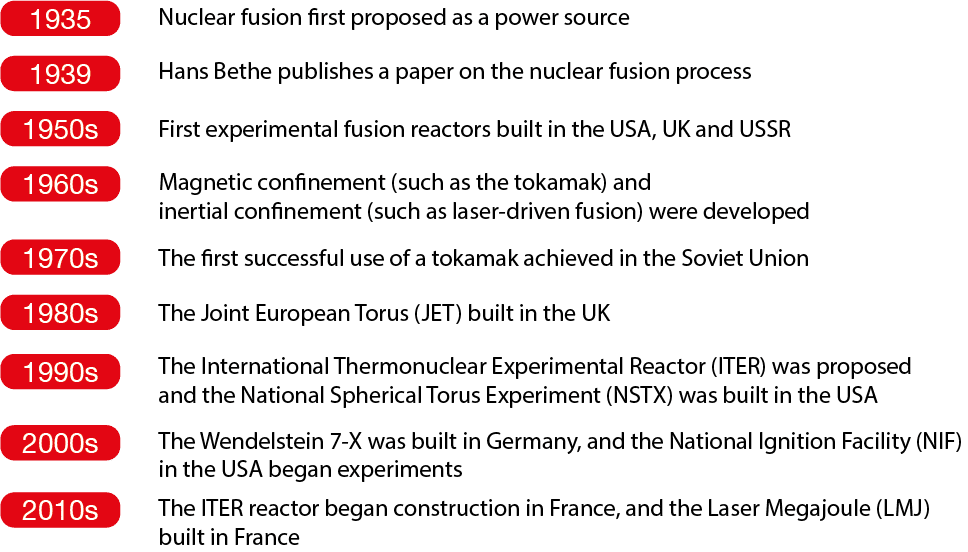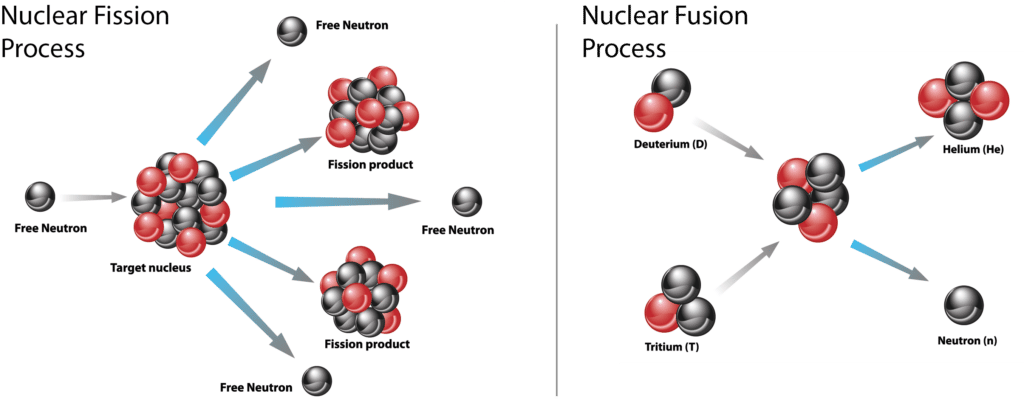Subscribe to our newsletter
Will we only ever dream of endless energy?

Image credit: NIF, Lawrence Livermore National Laboratory, US.
The recent nuclear fusion ignition event at the National Ignition Facility at the Lawrence Livermore National Laboratory in California is a triumph of modern science and of the persistence of scientists who continue to strive to solve some of the most difficult technical and engineering challenges of a generation. However, it is important to see this development in a broader context of global events as well as the research environment that has been created to support the nuclear energy developments upon which society is increasingly likely to depend in the coming years.
Did we vote for this?
It may be argued that geopolitics has been driven by an energy agenda since the late 19th century, when the industrial revolution had moved solidly beyond the borders of the UK and countries began competing for global resources to fuel their burgeoning industrial economies. As our economies have become larger so has our need for energy. Most recent wars (including the one in Ukraine) have been about control of energy resources – oil or gas. As supplies become more scarce or more expensive to extract, tensions will rise. While voters do not vote (in most cases) directly to support a specific energy-based geopolitical stance, in recent years energy has become a more overt topic in elections.
Even in countries where energy independence is a critical geopolitical issue, green parties do not command a large percentage of the vote, nor do mainstream political parties necessarily have well-articulated policies related to energy independence. In Germany, a country with significant foreign energy dependencies (63.7%) that have appeared in the news this year, the Greens garnered 20.5% of the vote in the 2021 federal elections. Meanwhile, in The Netherlands and Belgium next door, countries with even higher percentage dependencies on foreign energy (68.1% and 78% respective) than Germany, green parties have begun to slowly gain ground.
This is perhaps due to the fact that our homes have, until this winter, remained warm at a reasonably affordable cost. However, the phase change that we have all experienced in 2022 (for some very painfully) is a sign of things to come. Indeed, if electorates were to cast their votes more directly based on the growing issues of energy dependence, we might see a significant change in the political landscape in the next few years. Trading blocs like the EU may become more robust in their energy policy – we have already seen the establishment of the EU Energy Platform to start to mitigate the effects of dependency on Russian gas. Being outside such a bloc in current times appears foolish at best.
Enter the apparent saviour of the day, courtesy of a nuclear fusion experiment from the National Ignition Facility (NIF) at Lawrence Livermore National Laboratory in California. Hailed by a number of media outlets as a solution to our energy problems, we need to be careful about being overly optimistic. Anyone who has had an interest in nuclear fusion knows that we have been 30 years away from commercial nuclear fusion for the last 40 years. Indeed, it will come as a surprise to precisely no one who knows me that the seminar I gave in English class 31 years ago as a 14-year-old was on tokamak fusion. I clearly recall stating that nuclear fusion was 30 years away. Which just goes to show – I was wrong!
But, this all sounds a bit dangerous…
Perhaps unsurprisingly, some voters have been worried about the risks of developing nuclear solutions. Harnessing the energy source that, uncontrolled, underlies the most destructive weapons that our species has ever produced, and which powers the Sun, and consequently our entire lives, is an illusive and sometimes perilous pursuit. Classic science fiction novels such as Asimov’s Robot series, and TV shows like the 1980s adaptation of Buck Rogers have shown the post-apocalyptic atomic horrors that paint vivid pictures in our minds of both promises of success and failure with fusion. For many, fusion is not just a technology but a cultural phenomenon. As a technology it looms large in our collective consciousness partly because it is one that has been in development and which holds so much power both for positive and negative outcomes. As a young researcher, it is a beguiling field of study – some of the best minds on the planet, for several generations, have wrestled with taming nuclear fusion.

Our knowledge of both forms of nuclear energy – fission and fusion – originate in Einstein’s famous observation that energy and mass are equivalent: E = mc2. In the case of nuclear fission (the process used in current nuclear power plants and in the earliest atomic weapons), heavy elements such as Uranium and Plutonium are used. A heavy element is one in which there are many protons and neutrons in the nucleus of each atom. A configuration of many protons and neutrons (beyond 92 protons) is unstable, which means that the energy required to keep the nucleus together is more than if the atom were to split into two (or more) lighter elements. Just a little interaction with, say, a free neutron is enough to break down the nucleus of some heavy elements into the nuclei of two or more lighter elements. As this process takes place a little energy is given off, which can be converted to heat to turn a turbine. The downside of nuclear fission is that you end up with residual elements that, while more stable than the original atoms in the reaction, are still radioactive and remain so for many years. Such waste products require careful storage in locations where they cannot damage living organisms.

Nuclear fusion, however, is a process that takes place at the other end of the periodic table with very light elements. The energy produced in the fusion reaction is around 5-10x larger than that in a fission reaction. In addition, the by-products are not radioactive – just helium, some neutrons, and energy. In essence, nuclear fusion is a completely clean energy source. Such is the promise of nuclear fusion that some of the best minds in physics have worked on nuclear fusion over the last century. Today, the best minds are also supplemented by AIs, which help to optimise calculations and design the next generation of test reactors.
There are many approaches being developed as a candidate for a commercial nuclear fusion reactor. The main ones include: Magnetic confinement fusion (the type involving ring-style devices – probably the most famous until the recent announcement from NIF), inertial confinement fusion (the type reported on recently); laser-driven fusion; magnetised-target fusion, acoustic inertial confinement fusion, Z-pinch fusion, Muon-catalysed fusion and Nuclear reaction control fusion. Each of these approaches has a different risk profile and different pros and cons, but a successful solution may well need learnings from several of these different technologies.
While the experiment reported recently from the NIF is a significant step in getting to nuclear fusion it is not actually a “break even” event – if you include all the energy used in creating the reaction, you’ll find that the reaction still didn’t get more energy out than was put in. There is still a long way to go but, there may be a value to making something out of this step. Returning science to the public consciousness in a positive way, especially in the face of recent developments in Ukraine and their fallout in the oil industry, may have its benefits. But, it will be important not to overplay the hand – presenting this as fusion being “just around the corner” can backfire badly.
OK, so when will we have it?
Given the increasing importance of this technology to the future of humanity, one would expect to see a significant amount of research funding going into the various different routes to fusion. And while the amount is substantial it is, perhaps, less than might be expected.
Global competitive grant funding for fusion research is at the level of around USD $800 million per year. Put another way, the US spends around USD $45 billion per year on the total budget of the National Institutes of Health (NIH) and the world spends around USD $32 billion annually on Sustainable Development Goal-related competitive research grants.
I contend neither that health research is not critical, nor that SDG-related research is not an excellent way to spend public money. However one may expect that an effectively limitless, clean energy source that would reduce global dependency on fossil fuels, make a considerable contribution not only to the reduction in greenhouse gases and the cost of living, but which would also reduce global geopolitical tensions, might warrant more than 1.5% of the annual funding spent on these other worthy and critical initiatives.
I don’t want to address issues of lobbying in this piece as the point is well known, rather I want to finish by exploring two points that are closer to research. Firstly, the observation that metrics are powerful drivers of behaviour and, secondly, that links to immediacy seem to be critical in decision making.
Over the last few years, the global nuclear fusion community has consistently produced around 4,000-5,000 research papers per year. However, over the same period the biomedical research community has produced between 800k and 1.25m papers per year; SDG communities have published between 400k and 1m articles per year. A naive argument would be that fusion papers look expensive relative to the more recent papers in either SDG-related research or biomedicine. But, while it is objectively clear that these areas of research are not comparable in their nature, the incentives in the research world are very much skewed toward paper production, which will tend to disadvantage nuclear fusion research. Of course, papers are only one measure of research output. The recent announcement with which I started this blog is a very tangible output of research and its media coverage is positive, but such events are few and far between and hence don’t easily play into a higher speed research narrative.
At a more fundamental level, immediacy plays a critical role in this discussion. It took the better part of 20 years to build momentum for research and funding of SDG-related research, but similar levels of research output and funding were achieved for COVID research in just 24 months. The threat of not understanding the SDGs is not immediately evident in the lives of those with established advanced economies or large continental territories that are not so directly at risk from rising water levels or energy challenges – it has not been a burning platform for them. While the threat of COVID is not as existential or as long-lived for humanity as either SDGs or the emerging energy crisis, the immediacy of the issue in the G20 made the topic instantly appealing both for funding and for publication.
At its heart, nuclear fusion suffers from a perception problem – it is always 30 years away. Because we don’t associate everyday challenges such as energy prices, war, and economic stagnation with not having nuclear fusion as one of our power options, we don’t make research decisions or political choices based on funding and solving this problem. We need a long-term alignment across the political spectrum that strives for nuclear fusion with consistent funding and clear strategic intent to gain this.
If the NIF announcement leads to a broad realisation that we are getting closer and that voters and hence politicians will take note of the seriousness of our situation, then perhaps another 30 years will not be needed.
Funding levels and publication counts in this article are sourced from Dimensions.

About the Author
Daniel Hook, CEO | Digital Science
Daniel Hook is CEO of Digital Science, co-founder of Symplectic, a research information management provider, and of the Research on Research Institute (RoRI). A theoretical physicist by training, he continues to do research in his spare time, with visiting positions at Imperial College London and Washington University in St Louis.
